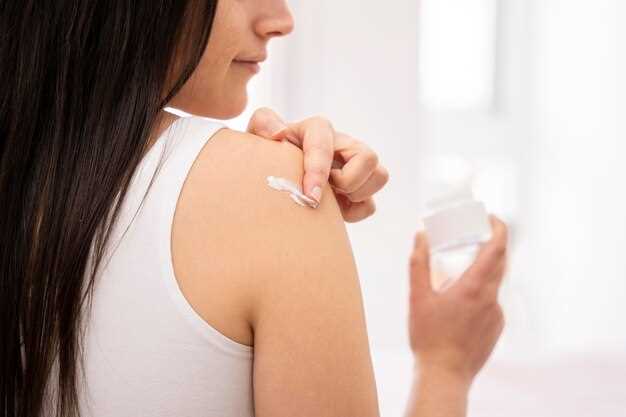
Find relief from your rash symptoms with hydroxyzine. Our effective medication can provide quick relief from itching, redness, and inflammation caused by various types of rashes.
Control your symptoms
Hydroxyzine is available in different dosages to meet your individual needs. Our experienced healthcare professionals can help determine the right dosage for you based on the severity of your rash and your medical history.
Relieve itching and discomfort
Don’t let a rash disrupt your daily life. Hydroxyzine can relieve itching and discomfort, helping you get back to feeling your best. Consult with your doctor or pharmacist to learn more about the proper dosage and how hydroxyzine can alleviate your rash symptoms.
Understanding the symptoms
When dealing with a rash, it is important to understand the symptoms that you are experiencing. Rashes can vary in appearance and can be accompanied by itching, redness, and inflammation. Some rashes may also cause pain or a burning sensation.
Understanding the symptoms can help you identify the underlying cause of the rash and determine the best course of treatment. It can also help you differentiate between a minor rash that can be managed at home and a more serious rash that requires medical attention.
Common Symptoms of Rashes
There are several common symptoms associated with rashes:
- Redness: Rashes often cause the affected area of the skin to become red.
- Itching: Itchy skin is a common symptom of many rashes.
- Inflammation: Rashes may cause the skin to become swollen and inflamed.
- Bumps or blisters: Some rashes may cause the formation of small bumps or blisters.
- Scaling or flaking: Certain rashes can lead to the skin becoming dry and flaky.
If you are experiencing any of these symptoms, it is important to consult with a healthcare professional for an accurate diagnosis and appropriate treatment options.
The importance of proper dosage
When it comes to managing rashes, finding the right medication is crucial. However, it is equally important to understand and adhere to the proper dosage recommended by healthcare professionals. Proper dosage ensures the effectiveness of the medication and reduces the risk of side effects.
Understanding the medication
Before starting any medication for rashes, it is important to consult with a healthcare professional who can prescribe the appropriate medication based on the severity of the rash and your medical history. Once the medication is prescribed, it is essential to understand the specific dosage instructions.
Following the instructions
Proper dosage instructions include the frequency of medication intake, the duration of the treatment, and the specific amount of medication to be taken each time. It is crucial to follow these instructions diligently to ensure the medication works effectively.
Deviation from the prescribed dosage can lead to either underdosing or overdosing, both of which can have negative consequences. Underdosing may result in the medication being ineffective and the rash not being properly treated. On the other hand, overdosing can lead to adverse side effects and potential harm to your health.
Consulting with a healthcare professional
If you have any questions or concerns about the proper dosage of your medication, it is important to consult with a healthcare professional. They can provide guidance and clarify any doubts to ensure you are taking the right amount of medication for your specific rash.
Remember, proper dosage is key to successfully managing a rash. By understanding the medication, following the dosage instructions, and seeking guidance from healthcare professionals, you can effectively treat your rash and minimize any potential risks.
Tips for managing rashes
Dealing with rashes can be uncomfortable and frustrating. However, there are several tips you can follow to manage your rashes effectively:
1. Keep the affected area clean: It’s important to clean the rash with mild soap and water to prevent infection. Gently pat the area dry with a clean towel.
2. Apply a cold compress: Using a cold compress or ice pack can help reduce inflammation and soothe any itching or discomfort caused by the rash. Remember to wrap the compress in a thin cloth to protect your skin.
3. Avoid scratching: As tempting as it may be, scratching the rash can worsen the symptoms and increase the risk of infection. Try to resist scratching and find alternative ways to alleviate the itch, such as applying a soothing lotion or using over-the-counter hydrocortisone cream.
4. Wear loose-fitting clothing: Tight clothing can irritate the rash further, so it’s best to opt for loose-fitting, breathable fabrics. This helps reduce friction and allows the affected area to breathe.
5. Identify triggers: Pay attention to any potential triggers that might be causing or aggravating your rash. This can be certain fabrics, skincare products, or even certain foods. Once identified, try to avoid these triggers to prevent future rashes.
6. Stay hydrated: Drinking plenty of water can help keep your skin hydrated and improve its overall health. This can potentially reduce the severity and frequency of rashes.
7. Follow your healthcare professional’s advice: It’s crucial to consult with a healthcare professional, such as a dermatologist, who can provide personalized advice and treatment options for managing your rashes. They can help determine the underlying cause of the rash and recommend the most suitable medications or therapies.
By following these tips, you can effectively manage and alleviate the symptoms of your rash. Remember, if your rash persists or worsens, it’s important to seek medical attention for proper diagnosis and treatment.
Tips for managing rashes
Dealing with rashes can be uncomfortable and frustrating, but there are steps you can take to manage them effectively. Here are some tips to help you on your way:
-
Keep the affected area clean and dry

Washing the rash gently with mild soap and water can help prevent infection and promote healing. Make sure to pat it dry gently with a clean towel afterwards.
-
Avoid scratching
While rashes can be itchy, scratching them can further irritate the skin and potentially lead to infection. Use a soft cloth or your clean fingertips to gently dab or pat the affected area instead.
-
Apply a cold compress
A cool compress can help to temporarily relieve itching and reduce inflammation. You can use a clean cloth soaked in cold water or a cold pack wrapped in a thin towel. Apply it to the rash for a few minutes at a time.
-
Use gentle, non-irritating products
When choosing skincare products, opt for ones that are fragrance-free, hypoallergenic, and gentle on the skin. Avoid any products that may contain allergens or irritants that can worsen the rash.
-
Wear loose-fitting clothing
Tight clothing can rub against the rash and cause further irritation. Opt for loose-fitting, breathable fabrics that won’t trap moisture against the skin.
-
Avoid triggers
If you know what triggers your rash, try to avoid those triggers as much as possible. Common triggers can include certain fabrics, soaps, detergents, and allergens.
-
Keep moisturized
Dry skin can worsen rashes, so it’s important to keep the affected area moisturized. Look for a moisturizer specifically formulated for sensitive or irritated skin and apply it regularly.
-
Manage stress
Stress can weaken the immune system and potentially worsen rashes. Finding healthy ways to manage stress, such as exercise, meditation, or talking to a trusted friend or therapist, may help improve your overall well-being and reduce the severity of your rash.
-
Avoid hot showers and baths

Hot water can further dry out the skin and worsen rashes. Opt for lukewarm water instead and limit your bathing time to avoid stripping the skin of its natural oils.
-
Consider over-the-counter creams
There are over-the-counter creams and ointments available that may provide relief from itching and help to soothe rashes. Look for products that contain ingredients like hydrocortisone or calamine.
If your rash persists or worsens despite these measures, it is important to consult with a healthcare professional for further evaluation and guidance.
Consulting with a healthcare professional
When dealing with a rash, it’s always important to consult with a healthcare professional. They have the expertise and knowledge to provide accurate diagnosis and treatment options. Whether you are experiencing a mild or severe rash, it’s crucial to seek medical advice.
A healthcare professional can assess the severity of your rash and determine the underlying cause. They may suggest additional tests or examinations to rule out any other underlying medical conditions that may be causing the rash.
By consulting with a healthcare professional, you can receive proper guidance on the best course of action to take. They can recommend the most suitable medication, prescribe the correct dosage, and provide instructions on how to apply or take the medication correctly.
Moreover, a healthcare professional can provide valuable advice on managing and minimizing rashes. They can suggest appropriate skincare routine, recommend over-the-counter remedies, or suggest lifestyle changes that can help alleviate symptoms and prevent future rashes.
In summary, consulting with a healthcare professional is essential when dealing with a rash. They can provide proper diagnosis, suggest appropriate medication, and offer valuable advice on managing and preventing rashes. Don’t hesitate to reach out and schedule an appointment with a healthcare professional to ensure the best possible outcome for your rash.
